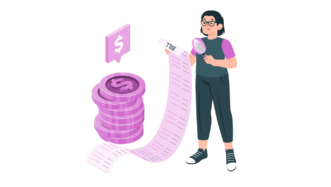LESSON OVERVIEW
In this ESL lesson about communication students talk about difficult conversations and share their experiences. They learn vocabulary, watch a video, have a discussion, role play and practise useful expressions.
C2 / Proficiency75 minStandard LessonFree
WARM-UP & VOCABULARY
The lesson starts with a warm-up in which students look at the examples of difficult conversations (e.g. firing someone, refusing to lend money to someone, dealing with a very upset customer, etc.) and discuss them. Students can also think about their own examples of difficult conversations they’ve had recently. This ESL lesson about communication also includes a vocabulary activity in which students complete the pairs of sentences with one word from the provided list (e.g. hijack, validate, untangle, etc.). The sentences present both meanings of the word – literal and figurative. Then, students practise the vocabulary more. They read the statements again and decide what might have happened so that people said them.
VIDEO & ROLE PLAY
In this part of the ESL lesson about communication students watch a video, have a discussion, learn more phrases and put them into practice. Before watching the video, students think about a few techniques to use in a difficult conversation. They also try to finish some sentences with their ideas. Then, they watch the video about difficult conversations and compare their ideas with those of the speaker. Students then discuss the tips from the video and some other points. After that, students work with more vocabulary and do a multiple choice activity. They complete the sentence with two possible phrases (e.g. chime in/interject, to put it gently/mildly, etc) and practise them by creating sentences for the situation. To wrap up the lesson, students role play different scenarios (business and general) and use the phrases from the lesson.
HOMEWORK/REVISION
The ESL lesson about communication includes a supplementary task to practise useful phrases from the lesson. In the task, students need to complete the comments and the responses and match them. The task is available in the teacher’s version of the worksheet and can be printed for students or accessed in the e-lesson plan for online teaching.
WORKSHEETS














What a great lesson! Cool video, I personally love this speaker and the activities are beneficial. My students love the lesson, the vocabulary, and it’s been easy to get them engaged. Thank you guys!
Thank you, Christiane! You made my day 🙂
what an awesome lesson – using it with my Business English Advanced workshop and it’s an absolute Hit!!
Yay! Thanks for sharing 🙂
my C1-level students found this lesson a bit challenging (loads of new vocab), though enjoyed it very much. Thank you!
Thanks for the comment! The lesson is a bit vocabulary heavy but I hope there is also enough practice tasks to help students remember it all.
the info on slide 23 is incorrect
To put it …, your daughter has been causing some issues this semester.
1. gently 2. mildly 3. neutrally 4. frankly
1, 2 and 4 are correct phrases but the 4th one is marked as incorrect.
That’s right!
Frankly speaking, you’re totally right.
Thanks for sharing. You’re right, ‘frankly’ could be used there, too, but if you look at the context (‘some issues’), the other two words are arguably more suitable. And the rubric reads: Choose two suitable options. However, to avoid any confusion, we replaced ‘frankly’ with an incorrect answer.
Thank you for the review, response and update 🙌
Awesome lesson, Ewa! Thank you.
Thanks, Natalia 🙂
Very impressive lesson with such interesting language and exercises for advanced learners. Well done!
Fantastic! Thanks for your feedback!
This is a fantastic lesson! Packed with valuable information. I used it for 3 speaking sessions and the students loved it. Thank you so much for creating such amazing lessons, Ewa 🙂
Thanks! I’m really happy to hear the lesson was a success with your students 🙂
Thanks a lot!!! Amazing job!
Glad you like the lesson! Thanks for your comment 🙂